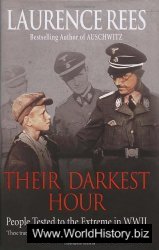Women who engaged in sexual intercourse for money, or prostitutes, primarily worked in the urban areas during the 19th century. It is difficult to estimate with any reliability exactly how many prostitutes were working at any given time given the moral stigma associated with the profession. The best numbers available come from a study done by Dr. William Sanger, who was a well-known expert at the time. Studying prostitutes in New York City from 1850 to 1870, he found a steady rise in the number of women engaging in the trade, from 5,413 in 1850 to 8,750 in 1860 to 9,894 in 1870. By 1870, when he concluded his study, Sanger estimated that 2 percent of New York’s women were working as prostitutes.
Prostitutes who worked in brothels, also known as “bawdy houses,” “bordellos,” or “bagnios,” tended to be favored by the members of the upper class and by young, single middle-class men living in the city on their own.
These establishments were typically run by former prostitutes, called “madams,” and were usually fairly discreet. Brothels often served liquor and food and would sometimes entertain men for an entire weekend. Less affluent working-class men, such as sailors, could not afford such luxuries and were compelled to find prostitutes in the public places that they were known to frequent, particularly cigar stores, dance halls, and theaters.
The public presence of prostitutes in high-profile cities such as New York and Philadelphia called forth many moral reform or antivice movements, beginning early in the 19th century and gathering momentum in the 1830s and 1840s and lasting to the end of the century. Christian ministers and middle-class women agitated against prostitutes and their customers, calling for harsher laws on the one hand and positive programs to restore the “fallen angels” away from their degraded lives on the other. Victorian notions of Christian propriety elevated the status of women based on their domesticity, purity, and piety. Obviously, the idea of young women selling their bodies for the sexual pleasure of men was deeply disturbing to many citizens. Yet in an era of growing poverty, many prostitutes felt forced to enter the trade due to financial considerations. At a time when living expenses were about $1.50 per week for a single woman, factory and domestic jobs paid between 750 and $2.00 a week. A successful prostitute, on the other hand, could earn $50 to $100 a week.
Political authorities in cities, responding to public outrage, regularly took steps to curtail the spread of prostitution, passing vagrancy laws or arresting any woman suspected of being a prostitute. In 1873 New York’s Committee for the Suppression of Legalized Vice was founded by prominent abolitionists and feminists, including Susan B. Anthony and Elizabeth Blackwell. These female purity reformers demanded new and strictly enforced laws against rape and prostitution.
There was opposition to these actions. Some doctors fought against antiprostitution laws, fearing they would lose business. Even some religious conservatives opposed steps taken to curtail prostitution, believing that God would punish prostitutes for their immorality by giving them sexually transmitted diseases. However, most Christian reformers believed in the redemption and reform of prostitutes and their clients.
Sexually transmitted diseases were indeed a major risk for prostitutes, particularly given the fact that some diseases, such as syphilis, could be fatal. Another problem was unwanted pregnancies. Although a number of methods of birth control, including condoms, were available, they were often unreliable or difficult to obtain. Rape was also a major concern of prostitutes, and although rape laws existed, convictions were rare. Most women worked as prostitutes for very short periods of their lives, and many came to tragic ends.
During the Civil War, prostitution increased. From 1861 to 1865, the majority of women worked as NURSES or in soldier’s aid societies, fulfilling their traditional Victorian roles as domestic nurturers. Less motherly were the thousands of prostitutes who flocked to the cities, from Washington, D. C., and Richmond, Virginia, to the lesser-known depots, such as Keokuk, Iowa, and Sewanee, Tennessee. Most notorious were Memphis and Nashville, where prostitution was placed under military licensing to control disease, an experiment that did not outlast the war years. One private described Nashville’s red-light district: “There was an old saying that no man could be a soldier unless he had gone through Smokey Row. . . . Women had no thought of dress or decency. They said Smokey Row killed more soldiers than the war.”
Many young volunteer soldiers, away from their families for the first time, took advantage of the opportunity to drink, gamble, and consort with the kind of women that were scorned back at home. Soldiers stationed in or near cities were particularly likely to solicit prostitutes, who often walked the streets quite openly. One reporter stationed in Washington, D. C., for example, complained that the city was “the most pestiferous hole since the days of Sodom and Gomorrah.” Prostitutes sometimes traveled with the armies, as well.
Some commanders were unconcerned with the sexual behavior of their men. Generals Daniel E. Sickles and Joseph Hooker were notoriously liberal in their attitudes about sex, although the story that the slang term hooker was adopted from the general’s name is not true. Most generals and junior officers were less understanding than Sickles and Hooker, however, and did what they could to limit their men’s access to prostitutes. This was due to a combination of moral concerns and practical matters— men inflicted with sexually transmitted diseases were made temporarily or permanently unavailable for duty. Despite the best efforts of Northern leadership, there were 182,482 diagnosed cases of syphilis and gonorrhea among Union soldiers during the Civil War. There is little statistical information available for Confederate soldiers, but it can be assumed that the rates of infection were similar.
See also women’s status and rights.
Further reading: Lori D. Ginsburg, Wo-men and the Work of Benevolence: Morality, Politics and Class in the 19th-Century United States (New Haven, Conn.: Yale University Press, 1990); Thomas P. Lowry, The Story the Soldiers Wouldn’t Tell: Sex in the Civil War (Mechanics-burg, Pa.: Stackpole Books, 1994); David J. Pivar, Purity Crusade: Sexual Morality and Social Control, 1868-1900 (Westport, Conn.: Greenwood Press, 1973); Luc Sante, Low Life: Lures and Snares of Old New York (New York: Farrar, Straus and Giroux, 1991).
—Christopher Bates
Quantrill, William Clarke (1837-1865) Confederate soldier
William Clarke Quantrill was a captain of the Confederate Partisan Rangers and the infamous leader of a guerrilla band known as “Quantrill’s Raiders.” Born in Canal Dover, Ohio, on July 31, 1837, he was a schoolteacher before moving to the Kansas Territory in 1857. Bitter antagonism between abolitionists and proslavery factions characterized the Kansas of the 1850s, and Quantrill joined the proslavery “border ruffians” after a series of odd jobs in Utah and Colorado. Operating under the alias Charley Hart, Quantrill switched loyalties to “jayhawking” abolitionists in Lawrence, Kansas, where he was wanted by authorities for kidnapping and theft. His ambush of his own JAYHAWKER band at Morgan Walker’s farm in Jackson County, Missouri, however, established him firmly in the proslavery faction of the BUSHWHACKERS.
Quantrill’s growing group of followers was loosely affiliated with the Missouri State Guard commanded by Confederate Maj. Gen. Sterling Price. Quantrill’s cavalry company also participated in the Battle of Wilson’s Creek on August 10, 1861, in which the CONFEDERATE ARMY, under Brig. Gen. Ben McCulloch, defeated the Union forces under Capt. Nathaniel Lyon. Quantrill’s Raiders continued to aid the Confederate cause throughout the war, largely by keeping Union troops distracted and away from the larger Confederate armies.
Officially made a captain of the Partisan Rangers on August 15, 1862, Quantrill often referred to himself as a colonel, and his followers usually numbered from a dozen to a couple hundred. Some of the most prominent members of the band included George Todd and Cole Younger, and later William “Bloody Bill” Anderson and Frank and Jesse James. The raiders were successful in looting and burning several small towns and garrisons on the Kansas-Missouri border and in murdering Union sympathizers, military and civilian alike. They sacked the towns of Aubry, Olathe, and
Shawneetown, Kansas, and were briefly assigned to Col. Joe Shelby’s regiment in Arkansas.
The best-known exploit of Quantrill’s Raiders was the destruction of Lawrence, the center of abolitionist activity in Kansas, on August 21, 1863. Quantrill gathered a force of about 450 men, the largest guerrilla force organized at one time in the CiViL War, for what is now considered the most terrible massacre of the entire war. The raiders murdered 150 men and burned and looted almost all of the town, possibly in retaliation for the forced deportation of family members and other sympathizers in Missouri, or perhaps for the deaths of female relatives who were killed when the building in which they were forcibly held collapsed.
The Raiders headed south for winter quarters, routing a small federal force in Baxter Springs, Kansas, on their way to Texas. While encamped in Mineral Creek, Texas, during the winter of 1863-64, tensions among leaders led to a breakdown in group cohesion. After returning to Missouri in April 1864, a quarrel between Quantrill and Todd resulted in Quantrill’s leaving the Partisan Rangers and Todd’s taking over the leadership. However, Quantrill, Todd, and Anderson briefly reunited to support Sterling Price’s invasion of northern and western Missouri in the summer of 1864, during which Todd and Anderson were killed in action. This last major Confederate assault in Missouri dissolved in failure, and the effectiveness of guerrilla activities decreased as well.
Quantrill led a small band into Kentucky, where Maj. Gen. John M. Palmer sent out a group of federal bushwhackers against him, led by Edwin Terrill. In an ambush at Wakefield’s farm near Bloomfield on May 10, 1865, Quant-rill was disabled by a shot to the spine and was later taken to a military hospital in Louisville. He died there on June 6, 1865, and was buried in an unmarked grave. A strange series of events, however, later brought his body to rest in Canal Dover (Dover), Ohio, while the disintegrated remains of his ribs and spine were left in Louisville and his arm and shinbone were eventually buried in Higginsville, Missouri.
William Clarke Quantrill was considered to have leadership abilities, a calm disposition under pressure, and a tendency toward ruthlessness. His activities are an example of guerrilla warfare during the Civil War and illustrate the scale and nature of hostilities between proslavery and abolitionist forces in Kansas and Missouri in the 1850s and 1860s.
See also abolition; Bleeding Kansas; Kansas-Nebraska Act.
Further reading: Carl W. Breihan, Quawtrill and His Civil War Guerrillas (New York: Promontory Press, 1974); Albert E. Castel, William Clarke Quantrill: His Life and Times (Norman: University of Oklahoma Press, 1999); Michael Fellman, Inside War: The Guerilla Conflict in Missouri during the American Civil War (New York: Oxford University Press, 1989).
—Stacey Graham




 World History
World History









